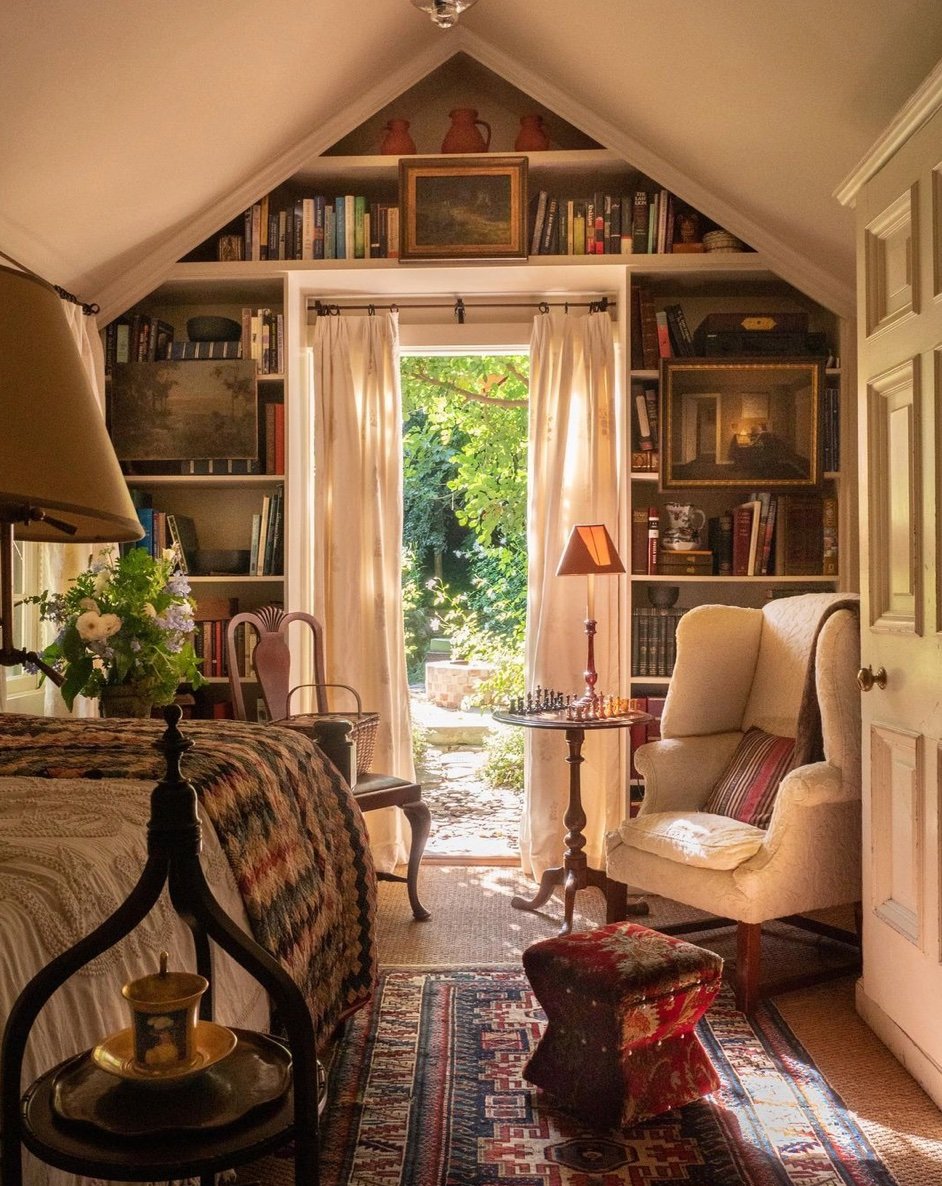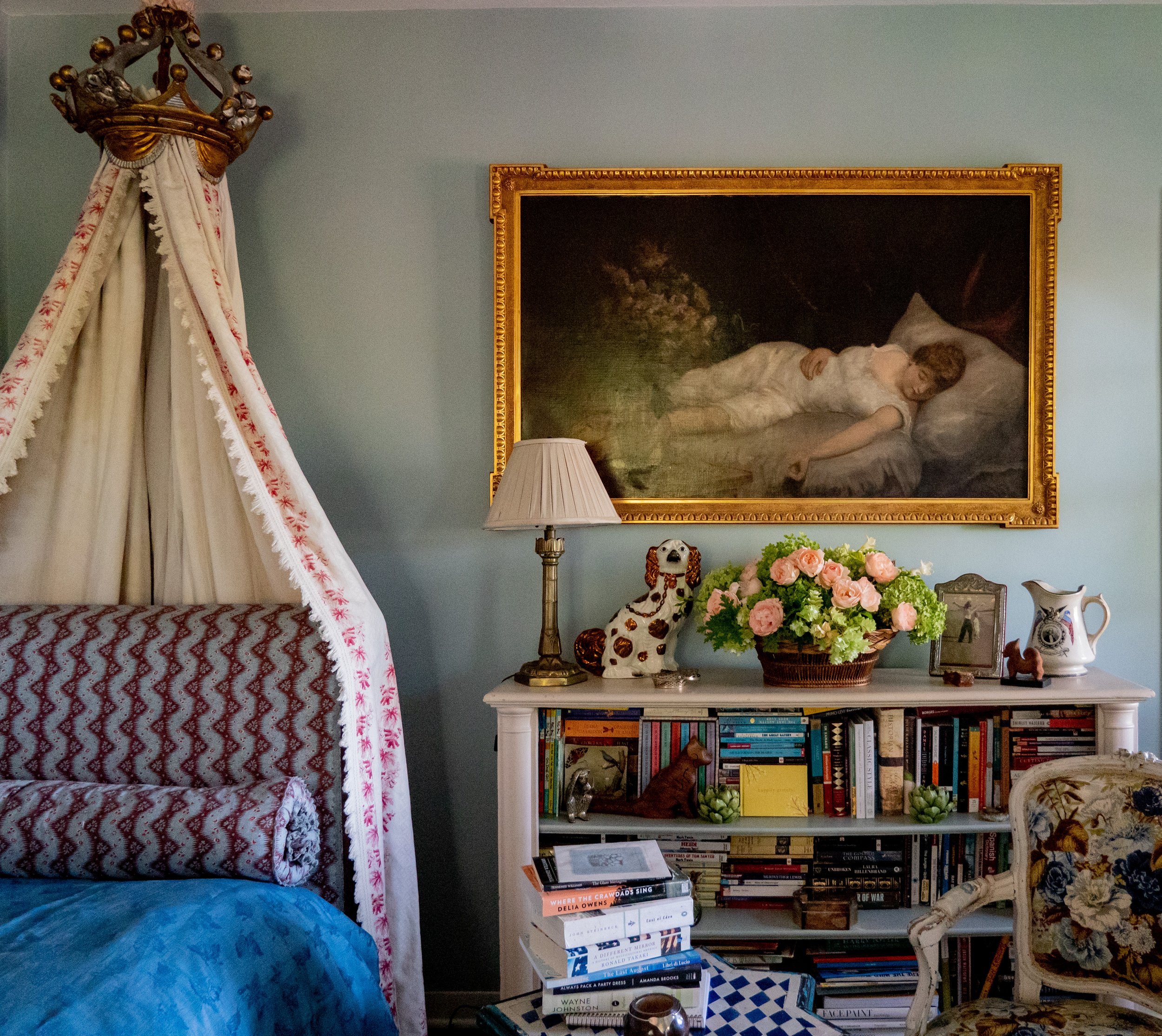When it comes to sophisticated sanctuaries few can beat the layered and liveable rooms created by architecture and design duo Stamps & Stamps. Odom and Kate Stamps have been creating timeless and harmonious English-inspired homes and gardens since 1991 with a lightness of touch which is distinctly Californian.
I caught up with Kate to find out how she works to create inspirational interiors that are rooted in the past yet perfectly designed for modern living.
Kate Stamps.
Where is home and what does home mean to you? Right now, home is in South Pasadena, California. Home is where loved ones are, of course, that’s first, but for me, home is all about the personal environment I create for myself, a place that I find at once visually stimulating and soothing.
How would you describe your decorating style? My decorating is all about accumulation, first in my memory, of all the places I’ve lived and those that have influenced my taste and then about thoughtful acquisition and placement of objects and all the things that will create a living reflection of the style I have evolved over the years.
Can you recall your earliest memory of appreciating beautiful art and objects? That is really difficult. I remember dressing up in one of my mother’s New Look dresses at around age 4- it was in a colour between mauve and fawn, silk taffeta with real pearls embroidered onto appliquéd cut out leaves. The crinolines were heaven, and the dress was really a work of art. I still remember that one very well. I grew up in a house full of paintings and antiques, though, and I think it is that whole set of rooms that made me want to be a decorator - the olive velvet wing chairs with a domino printed wallpaper and mostly early, dark English oak furniture and big oil paintings all set on worn carpets in the quiet room where I used to go to read- that was my favourite.
What is your most treasured possession? I really can’t think of one single thing that I could choose as the most important thing. If there was one object that was both sentimentally important and incredibly beautiful, so that it had tremendous personal meaning as well as aesthetic perfection, that would be it, and I can’t think of one of those! But if I had to run out of the house with just one thing, I think it would actually have to be two things- a photograph of my grandmother with her first born in her arms, and one of me with Emma in the same position. An unconscious echo through the generations. Both were taken before digital photography, so they are irreplaceable.
Which people and what places have sparked your creativity recently? Projects I’m working on always raise my creative energy, and wonderful clients are a great inspiration. Travel, which is the very best activity to stimulate and inform one’s perspective and style is finally a possibility again, and I’m enjoying that very much. England, Wales, New Orleans, New Mexico, and a few other places where we have projects provide a direct stimulus. Right now, the most personally exciting thing is a house in Wales that our daughter and her English husband are in the process of buying (fingers crossed!!) and which I will use as a base for an office in the UK. Of course, the whole thing is completely envisioned in my mind, and assuming all goes well, it will be utterly beautiful.
Your love of all things English contributes to your aesthetic vocabulary, are there any other places that you turn to for inspiration? All my years spent growing up in the Midwest grounded me very well. My university years in London and those later in New Orleans have been tremendous influences, all fully in my blood, but I have a love for the decoration of Turkey and the Middle East and Morocco, too, and eighteenth century houses in Denmark, Norway and Sweden have inspired me, as well.
Do you agree that there has been a resurgence of interest in traditional antiques and why do you feel that this is? I do definitely feel there has been a resurgence in interest in antiques and more traditional things. The pandemic, and lockdown in beige and grey boxes has reminded people that houses are for real life, not just temporary stopping off spots. Houses should reflect the style and taste and intelligence of their inhabitants, and hopefully that means decoration is more personal and more thoughtful. Also, there is always a pendulum swing in interior decoration from simple to complicated, from neutral to color, modern to traditional. It is usually a reaction when things go too far in one direction, and we were definitely due for a change in fashion. Antiques are also so much less expensive than they used to be, although that market is recovering, too.
What do you feel that portraits can add to a space and how would you describe their enduring appeal? I love portraits. realistic or abstract, 18th century or modern, they can really enliven a space. And portraits have been consistently undervalued, along with religious art, and the merit for money spent is unmatched. A really fabulous portrait will be of extraordinary quality, and add something inchoate to a room, maybe a companion, always quiet and thoughtful, but a real presence in your environment.
What are the most challenging aspects of your job, and what comes easier ... interior design or gardening? What we do costs a lot of money. It isn’t unusual here in Southern California to start with clients who have absolutely nothing they want to use in their new house, which is difficult on the budgetary front, although it may be better in the end result. If all of the contents need to be bought in a short period of time, we take special care to make sure the accumulation looks thoughtful and natural. Quality and authenticity cannot be faked, and I’m not eager to work on any project where clients don’t share those values. But charm can be subdued and reticent, and sometimes those rooms are the best and not so expensive to execute.
I love doing both houses and gardens, and I find them all so much fun to design. Most people maintain their houses pretty well, with a few notable and terrifying exceptions, but often they can’t or don’t maintain their gardens to the same standard. They rely on really poorly paid, untrained help and then don’t understand why the plants die or don’t thrive. At least the flowers on your chintz loose covers will survive without care for years, but the plants in the garden may not make it a week! And then there is the water shortage, but that is a very long and complicated topic.
What are your favourite markets and brocantes and what is your advice for collecting great objects? I still love Portobello, and the Paris flea markets, and I buy a good bit at auction. I have my favourite dealers and rely on them so much- their contacts, their eye for quality, their knowledge and also the fact that they accumulate and spend on things that are there and waiting when I need them makes them vital for what I do.
It is really important to collect the very best examples of the things you like. It is better to have fewer and better things than just a massive group of undistinguished objects. But good collections will make your rooms feel personal and well curated and make them into places where you will want to spend lots of time.
Do you have a key feature or element without which your projects would never be complete? Books. Books. Books. And of course pictures. And I can’t live without beautiful silver and drinking glasses and plates and flowers, but all those things can be collected over years.
Where and with whom are you happiest? That’s quite a question and one I’m still contemplating.
For more architecture, interiors and gardens inspiration head to stampsandstamps.com or seek out ‘Stamps & Stamps Style & Sensibility by Rizzoli.
Nick Cox/Period Portraits May 2022.








